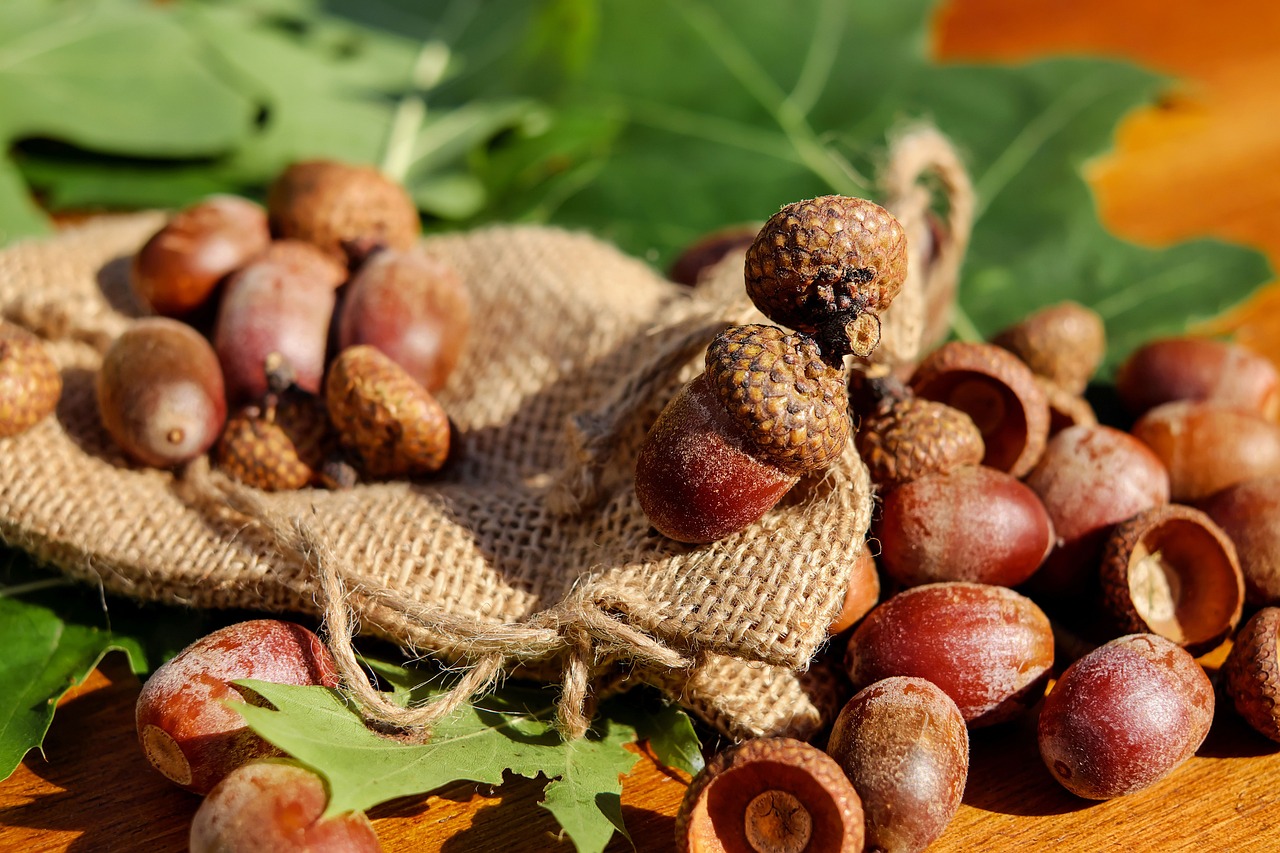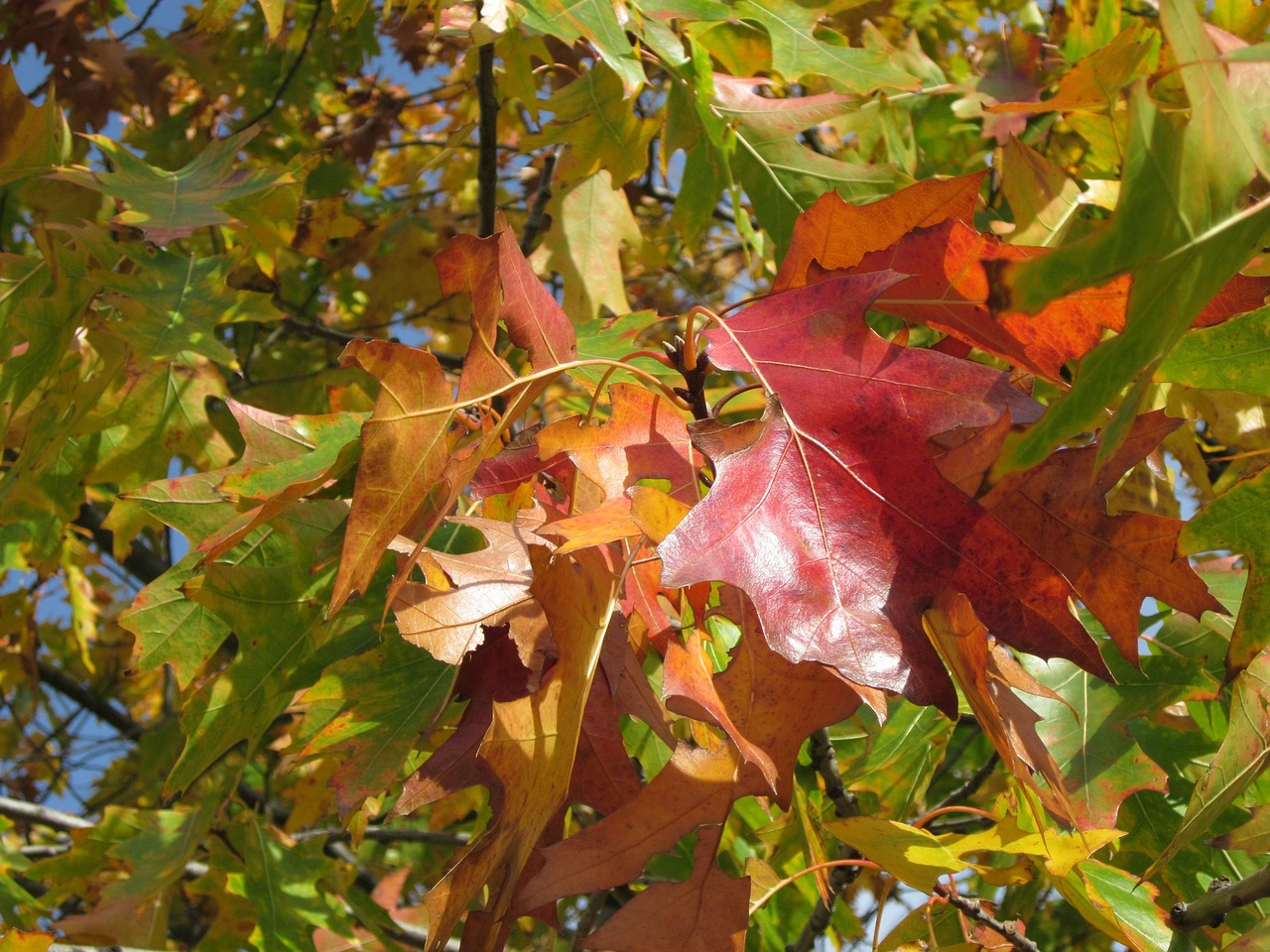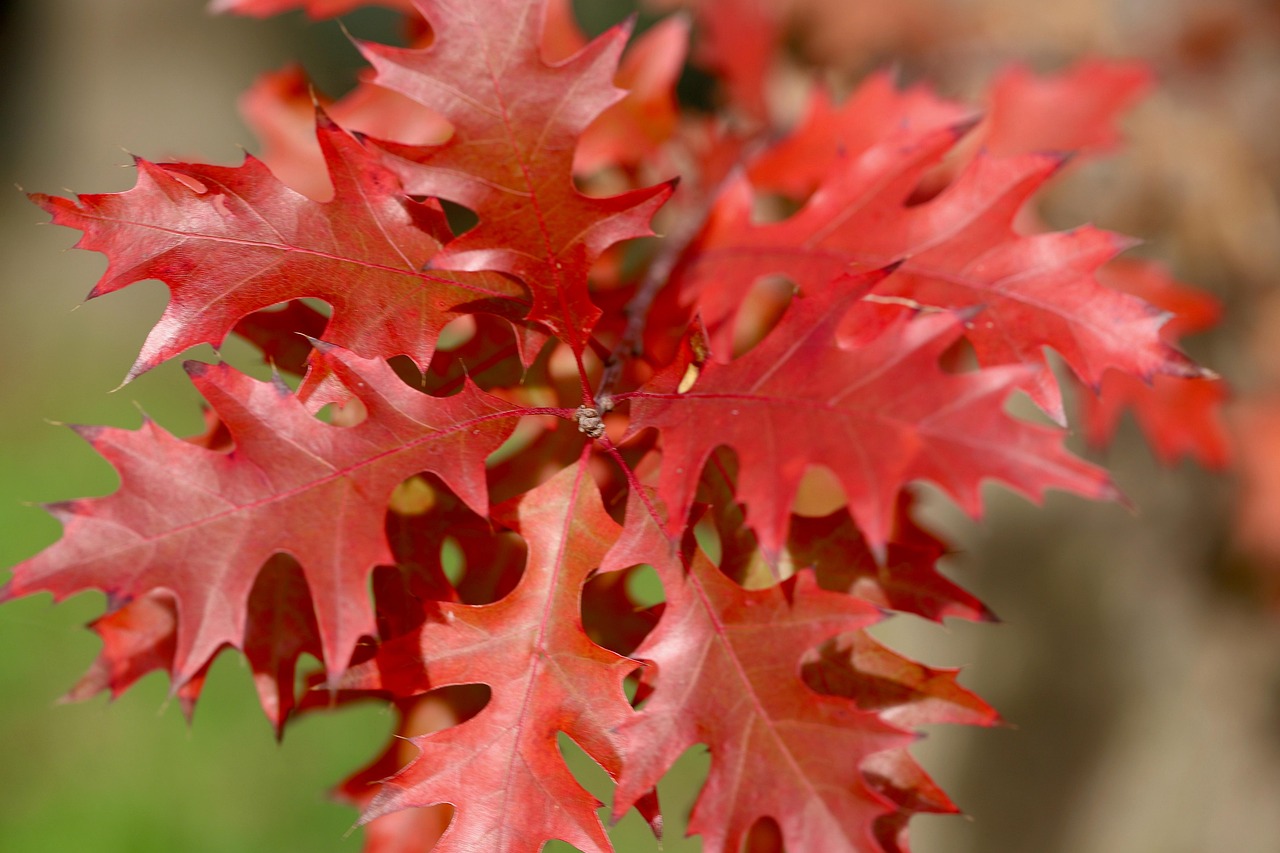The Northern Red Oak tree has a moderate to fast growth rate, typically achieving 1 to 2 feet of height per year under optimal conditions. This growth rate is favorable for timber production, making it a popular choice among foresters and landowners.
The Northern Red Oak (Quercus rubra) is a prominent species in North America, known for its beautiful foliage and valuable wood. It is widely utilized in timber production due to its strength, durability, and aesthetic quality. The tree thrives in various soil types, preferring well-drained, fertile conditions. Understanding its growth rate is crucial for effective forest management and sustainable timber harvesting.

In ideal growing conditions, Northern Red Oaks can reach heights of up to 60 feet or more. Their straight trunks and broad crowns make them particularly desirable for lumber. The wood is commonly used in furniture, flooring, and cabinetry. This species also plays an important ecological role, providing habitat and food for wildlife.
Factors Influencing Growth Rate
The growth rate of Northern Red Oak trees is influenced by several environmental factors. Key elements include soil quality, moisture availability, light exposure, and competition from other plants. Understanding these factors can help in maximizing growth rates for timber production.
- Soil Quality: Nutrient-rich and well-drained soils promote faster growth.
- Moisture Availability: Adequate water supply is essential, especially during the early years.
- Light Exposure: Full sun conditions help maximize photosynthesis.
- Competition: Minimizing competition from underbrush and other trees can improve growth rates.
The Northern Red Oak typically begins producing acorns at around 20 years of age. This reproductive maturity is vital for sustaining populations and establishing new growth. However, the growth rate can vary significantly depending on local conditions and management practices.

Growth Rate Statistics
Research has shown that Northern Red Oaks can exhibit different growth patterns based on their environment. Below is a table that summarizes average annual growth rates based on various conditions:
| Condition | Average Growth Rate (Feet per Year) |
|---|---|
| Optimal Soil and Moisture | 1.5 – 2 |
| Moderate Conditions | 1 – 1.5 |
| Poor Soil Quality | 0.5 – 1 |
In optimal conditions, Northern Red Oaks can grow rapidly, making them an excellent choice for timber production. However, other factors such as disease and pests can influence overall health and growth rates. Regular monitoring and management are essential to ensure robust growth.
This species is also known for its impressive fall color, attracting attention for landscaping and ornamental use. Its adaptability makes it a favored choice not just for timber, but also for urban landscaping projects. As cities expand, the Northern Red Oak is often planted to enhance green spaces.

Management Practices for Optimal Growth
To achieve the best growth rates for timber production, landowners should implement effective management practices. These may include:
- Thinning: Removing competing trees can reduce competition for resources.
- Soil Management: Testing soil for nutrient levels can guide fertilization efforts.
- Pest Control: Monitoring for pests and diseases helps maintain tree health.
- Irrigation: Providing supplemental water during dry spells ensures consistent growth.
By applying these practices, landowners can significantly enhance the growth rate of Northern Red Oak trees, leading to more profitable timber production in the long run.
Environmental Conditions Affecting Growth
The growth rate of Northern Red Oak trees is highly dependent on environmental conditions. Various factors, such as climate, soil type, and geographic location, play a significant role in determining how quickly these trees can grow. Understanding these conditions helps landowners make informed decisions regarding planting and management.
Climate Considerations
Northern Red Oaks thrive in temperate climates with distinct seasons. They require warm summers and cold winters to establish a proper growth cycle. The following climatic factors are crucial:

- Temperature: Optimal growth occurs between 75°F and 85°F during the growing season. Prolonged extreme temperatures can negatively affect growth.
- Precipitation: Regular rainfall is essential. Northern Red Oaks typically require at least 30 inches of rainfall per year for optimal growth.
- Sunlight: These trees prefer full sun exposure, meaning they need at least six hours of direct sunlight daily.
Understanding these climate factors is vital for selecting appropriate planting sites and ensuring that Northern Red Oak trees reach their full growth potential.
Soil Type and Quality
The type of soil significantly impacts the growth rate of Northern Red Oak trees. Here are some important soil characteristics to consider:
- Drainage: Well-drained soils are crucial. Poor drainage can lead to root rot and stunted growth.
- Nutrient Content: Soils rich in organic matter tend to support faster growth rates. Soil tests can help determine nutrient levels.
- pH Levels: A pH range of 6.0 to 7.5 is ideal for Northern Red Oaks. Soils outside this range may require amendments for optimal growth.
Landowners should consider conducting soil tests before planting to evaluate these characteristics and make necessary adjustments to improve soil quality.
Pests and Diseases Impacting Growth
Pests and diseases can significantly hinder the growth of Northern Red Oak trees. Awareness of potential threats allows landowners to take preventative measures and mitigate damage effectively.
Common Pests
Several pests are known to affect Northern Red Oaks. Some of the most common include:
- Oak Wilt: This fungal disease can cause rapid decline in oak health, leading to tree death if not controlled.
- Gypsy Moths: Caterpillars feed on leaves, reducing the tree’s ability to photosynthesize.
- Red Oak Borers: These beetles bore into the wood, weakening the tree structure.
Disease Management Strategies
Effective management strategies can help combat these pests:
- Regular Monitoring: Inspect trees frequently for early signs of pests or disease.
- Cultural Practices: Maintaining healthy growing conditions minimizes stress on trees, making them less susceptible to pest infestations.
- Pesticide Application: In severe cases, targeted pesticide applications may be necessary to control pest populations.
The Role of Fertilization in Growth
Fertilization plays a critical role in enhancing the growth rate of Northern Red Oak trees. Properly timed and applied fertilizer can provide essential nutrients that support robust growth.
Nutrient Requirements
Northern Red Oaks primarily require the following nutrients:
- Nitrogen: Vital for leaf development and overall tree vigor.
- Phosphorus: Supports root development and flowering.
- Potassium: Enhances stress tolerance and improves overall plant health.
Fertilization Practices
The best fertilization practices include:
- Soil Testing: Conduct soil tests to identify nutrient deficiencies before applying fertilizers.
- Timing: Apply fertilizers in early spring when trees resume growth.
- Type of Fertilizer: Use slow-release fertilizers to provide a steady supply of nutrients over time.
By implementing effective fertilization strategies, landowners can significantly enhance the growth rates of Northern Red Oak trees, optimizing their timber production potential without compromising tree health.
Harvesting and Timber Production
The Northern Red Oak tree not only grows at a favorable rate but also produces high-quality timber. Understanding the best practices for harvesting these trees is essential for maximizing yield and ensuring sustainability.
Timing of Harvest
Determining the right time to harvest Northern Red Oak is crucial for achieving the best timber quality. Several factors influence this decision:
- Aging: Northern Red Oaks typically reach optimal maturity for timber production between 40 and 80 years. At this age, the wood density and quality are at their peak.
- Market Conditions: Keeping an eye on market demand for oak timber can influence the timing of harvest. Selling during peak demand can yield higher profits.
- Tree Health: Assessing the health of the trees before harvest is critical. Trees affected by disease or pests should be prioritized for removal to prevent spreading.
Harvesting Methods
Several methods exist for harvesting Northern Red Oak, each with its advantages and disadvantages. The choice of method can affect the growth of remaining trees and overall forest health:
- Clear-Cutting: This method involves removing all trees in a specific area. It can lead to rapid regeneration but may also disrupt the ecosystem.
- Selective Cutting: Only certain trees are harvested, allowing others to continue growing. This method promotes biodiversity and maintains forest structure.
- Shelterwood Cutting: This method involves removing trees in phases. It provides a sheltered environment for younger trees to grow while gradually removing mature ones.
Post-Harvest Management
After harvesting Northern Red Oak, implementing effective post-harvest management practices can ensure sustainable growth and timber production in the future.
Site Preparation
Proper site preparation is essential after logging activities. It can help create favorable conditions for new growth:
- Removing Debris: Clearing logging debris can minimize pest habitats and facilitate new seedlings’ growth.
- Soil Aeration: Aerating compacted soil can improve root penetration for new saplings.
- Seedling Planting: Introducing new seedlings of Northern Red Oak or other compatible species can promote diversity and forest resilience.
Pest Management Post-Harvest
The risk of pest infestation often increases after harvesting. Implementing pest management strategies is vital:
- Monitoring: Regularly check the area for signs of pest activity or disease.
- Applying Treatments: Use integrated pest management strategies that may involve biological controls or targeted pesticide applications.
- Cultivating Biodiversity: Encouraging a diverse plant community can help deter pests naturally.
The Economic Importance of Northern Red Oak Timber
Northern Red Oak holds significant economic value in the timber industry. Its wood is highly sought after, making it an important species for commercial forestry.
Market Demand
The demand for Northern Red Oak timber remains strong due to its desirable properties:
- Aesthetic Appeal: The wood has a rich color and attractive grain pattern, making it popular for furniture and cabinetry.
- Durability: Known for its strength, Northern Red Oak is suitable for flooring and structural applications.
- Sustainability: Managed forests provide a renewable source of wood, aligning with growing consumer interest in sustainable products.
Challenges in Timber Production
Despite its advantages, there are challenges associated with Northern Red Oak timber production:
- Pest Infestations: As previously mentioned, pests can threaten tree health and timber quality.
- Climate Change: Changing climate conditions may affect growth rates and increase vulnerability to stressors.
- Market Fluctuations: Economic downturns can impact timber prices, affecting profitability for landowners.
By understanding both the opportunities and challenges linked to Northern Red Oak timber production, landowners can make informed decisions to enhance their forestry practices effectively.
Future Prospects for Northern Red Oak Timber Production
The future of Northern Red Oak timber production looks promising, given its numerous advantages and the growing demand for sustainable resources. However, proactive management and adaptation strategies will be essential for ensuring continued success in this field.
Adapting to Climate Changes
As climate change continues to impact ecosystems, it is crucial for landowners to adapt their management practices. Some strategies include:
- Species Diversification: Planting a mix of tree species alongside Northern Red Oaks can enhance resilience against climate fluctuations.
- Water Management: Implementing efficient irrigation systems can help mitigate the effects of drought conditions.
- Research and Monitoring: Staying informed about climate trends and their effects on tree growth can guide timely interventions.
Enhancing Forest Health
Maintaining forest health is vital for maximizing timber production. Key practices include:
- Regular Inspections: Conducting routine health checks on trees can help identify issues before they escalate.
- Promoting Biodiversity: Encouraging a diverse ecosystem around Northern Red Oaks can strengthen their resilience against disease and pests.
- Implementing Integrated Pest Management: Utilizing a combination of biological, cultural, and chemical controls can effectively manage pests without harming the environment.
Technological Advancements
The integration of technology into forestry practices can significantly enhance timber production efficiency. Some advancements include:
- Drones: Using drones for aerial surveys can help in assessing forest health, mapping areas needing attention, and monitoring growth rates.
- Forest Management Software: Utilizing software tools can assist in planning, tracking growth, and managing resources more effectively.
- Genetic Research: Advances in genetics may lead to the development of improved tree varieties with higher growth rates and better resistance to pests and diseases.
Final Thoughts
Northern Red Oak trees present an excellent opportunity for timber production due to their moderate to fast growth rate, high-quality lumber, and ecological benefits. Effective management practices, including proper harvesting techniques, soil management, pest control, and fertilization, are essential for maximizing growth rates and timber yield.
The economic potential of Northern Red Oak cannot be overstated. Its wood is highly valued in various markets, making it a profitable choice for landowners. However, challenges such as climate change and pest infestations must be addressed proactively to ensure sustainability in timber production.
By adopting adaptive strategies and embracing technological advancements, landowners can secure a prosperous future for Northern Red Oak timber production. Emphasizing sustainable forestry practices will not only benefit individual landowners but also contribute positively to the environment and local economies.
Ultimately, the successful management of Northern Red Oak forests hinges on a comprehensive understanding of growth conditions, careful planning, and a commitment to sustainability. As more individuals recognize the value of these magnificent trees, the future of Northern Red Oak timber production remains bright.
